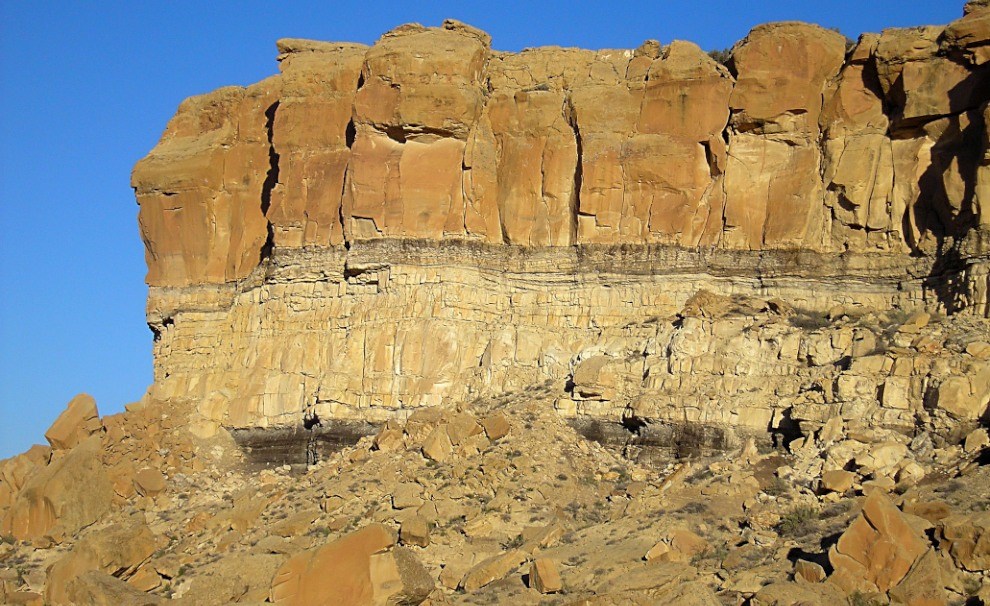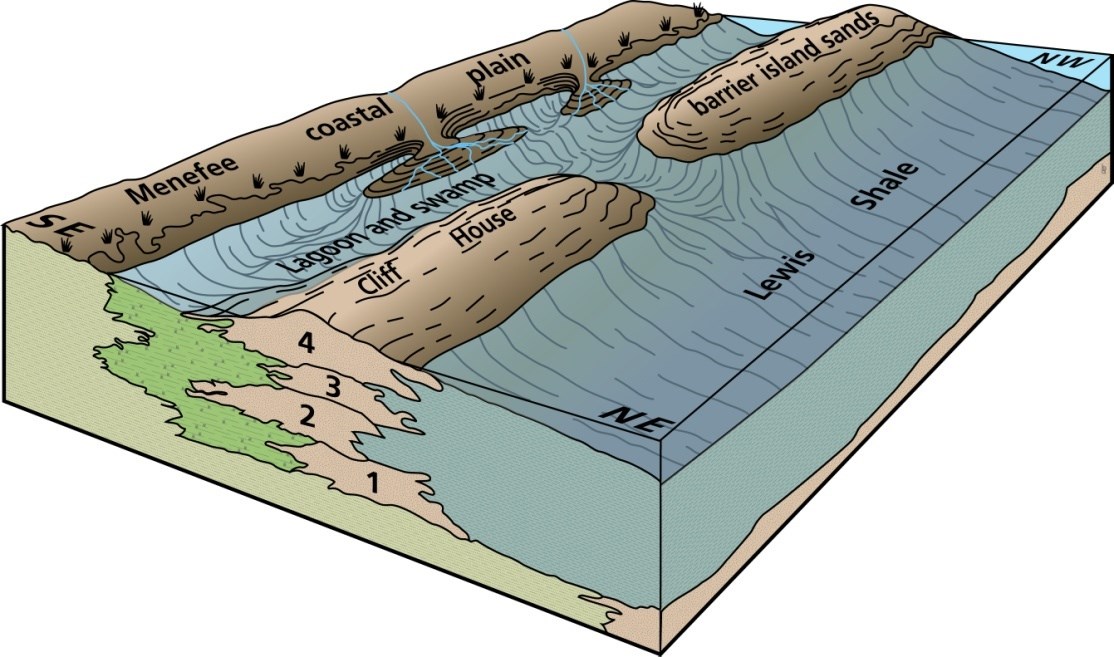Part of a series of articles titled Coastal Geomorphology—Storms of Record.
Article
Storms in the Geologic Record

NPS photo by Tom Lyttle.
A suite of rocks known as the Mesaverde Group records 80-million-year-old hurricanes. Geologists divide the Mesaverde Group into members, including the Point Lookout Sandstone, the Menefee Formation, and the Cliff House Sandstone. These Cretaceous sandstones preserve hummocky cross-stratification, which is indicative of storm activity in the rock record as well as in present-day beach profiles. The ancient deposits show hurricane washover channels and fans identical to those formed along the Gulf of Mexico today (Matthews et al. 2003).
The National Park System hosts good examples of these ancient hurricane deposits. For example, the majority of the exposed strata at Chaco Culture National Historical Park (New Mexico) belong to the Mesaverde Group, in particular and the Cliff House Sandstone.

From Love (2010), used by permission of the New Mexico Bureau of Geology and Mineral Resources.
At Chaco Culture National Historical Park, these rocks record an episode of sea-level rise between 80 and 76 million years ago. At the time of deposition of these horizontal sedimentary layers, which now form plateaus, mesas, buttes, and canyons, Chaco Culture National Historical Park was part of a migrating coastline of an ancient inland sea called the Cretaceous Interior Seaway. This seaway was hundreds of miles wide and divided North America into two separate land masses. Chaco Canyon was situated on the western shoreline. The northwest-southeast oriented epicontinental seaway stretched from the Arctic Ocean to the Gulf of Mexico. As the seaway repeatedly inundated and then receded from parts of the Four Corners area of New Mexico, Arizona, Colorado, and Utah, Cretaceous rocks in Chaco Canyon were deposited in coastal and marine settings such as barrier islands, lagoons, inlets, stream deltas, estuaries, and swamps (Love 2010).
Related Links
Last updated: May 30, 2019
